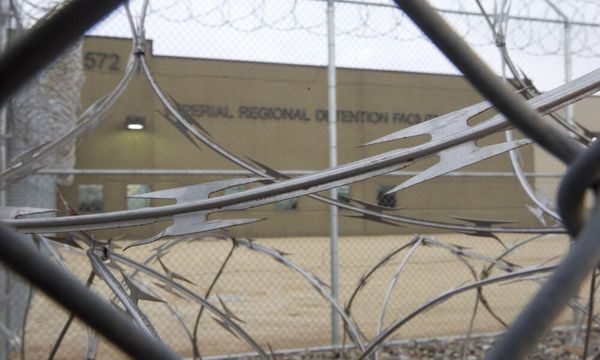
Natasha Hannah’s long daycare centre has just raised its fees for the second time in less than 12 months. She and her husband are now charged $191 a day for each of their twins’ childcare – and fees have gone up by $50 in two years.
After the childcare subsidy rebate, they pay a total of $517 a week for three days of childcare at the privately run centre in Moonee Ponds, Victoria.
“It’s nuts, I can’t believe it,” the lawyer, 38, says. “I’m feeling the pinch. It’s a good centre – they have a chef in-house – but I’d love to know what the fee breakdown is.”
She isn’t alone. A Bondi mother, who asked for her name not to be used, has also endured two fee rises in the past year and also pays $191 a day before the rebate. Fees at her children’s for-profit centre have increased by $20 in the past year.
Another Bondi provider in 2019 charged $138 a day for its not-for-profit long daycare service. Today the cost is $195.05. And in nearby Paddington one centre has gone up by $40 in two years and, from 1 July, will charge $228 a day.
Other parents Guardian Australia spoke to paid from $135 to $218 a day in Sydney. All of them reported rises in daycare fees in the past year – and, with no price cap mechanism in place, those prices can always nudge higher.
Guardian Australia last year reported that the early education and care sector was in crisis: rising fees, staff shortages and a lack of funding were blighting its abilities. Some of the most expensive and those with the highest fee increases – beyond inner metropolitan areas – were found in childcare deserts, including in mining regions and the outback.
But the sector is also under scrutiny. The Australian Competition and Consumer Commission’s report for the inquiry into childcare services, released at the end of January, found that a childcare subsidy rise was “limited” in putting downward pressure on daycare centre fees.
Any financial benefits from increases to the government subsidy in July 2023 – which broadened to include families earning under $530,000 and rose from 85% to 90% for those earning under $80,000 a year – were largely, if not wholly, eroded by concomitant rises in daycare fees.
As Hannah puts it: “The increase that the government made last year didn’t make a difference.”
The finding “confirmed what parents know and experience”, according to Georgie Dent of the early education advocacy group The Parenthood: “The cost of care is so high it is crippling.”
On 1 July, the Productivity Commission will hand down its report on a path to universal early childhood education and care. It is expected to be made public later in the year, with last year’s draft version recommending that every child have access to three days of quality childcare a week and families earning less than $80,000 should not have to pay for quality childcare.
Six months on from the ACCC report and approaching the end of the financial year, the outlook has not improved as childcare centres enter another season of fee increases.
Many will have reasonable grounds for increasing fees in July – such as ballooning rent, electricity and food costs.
“But, I know for a lot of families, when they receive notices of these increases, it’s just crushing,” Dent says.
It’s a reality that Debbie Zerbst, who manages a non-profit community daycare in Sydney’s east, knows well.
“We are very concerned for parents. Our fees are slightly lower than most, but we’ve had to put them up from July and we have prepared parents for another rise next year,” she says.
In July 2020 a day at the long daycare centre was $140. It is now $155 and will rise to $160 in July.
Food costs at the centre, where meals are cooked on-site, had risen by 10% to 12%, she says. Electricity, gas and even bank charges had also gone up.
“Tiny little costs batter us,” she says.
But her most expensive item, by far, is staff. She says she “gladly” pays wages of 10% above the industry award, which starts at a casual rate of $28.89 an hour.
The National Quality Framework evidence shows that not-for-profits, whose prices are generally lower, outperform for-profits on quality. Two-thirds of long daycare centres – “where the biggest fees are” – are delivered by for-profit providers, Dent says.
“Some people are making an extraordinary amount of money out of early learning and it is not educators and it is not parents of young children,” she says.
Central to the thorny issue is the fact that The Parenthood’s data shows 85% of families with young children now rely on two incomes to get by. Those parents depend on childcare while they work – but, unlike schools, which offer public and private options, long daycare comes with very little to no choice.
“The horrible mathematics is, for a lot of parents … the cost of care means they literally can’t afford to work,” says Dent, who calls it a cost-of-working crisis.
Hannah, who would like to work longer than the three days she is financially limited to, agrees. “You can see the system is broken: parents aren’t finding it affordable and educators aren’t paid enough.
“My husband and I are both lawyers, we’ve got good salaries and financially we are feeling the pressure. We are surviving at the moment.”
In its submission to the ACCC, the Australian Childcare Alliance, which represents for-profit long daycare providers, claimed that growing operational costs, including from regulatory requirements, in part accounted for fee rises.
Meanwhile, many are pushing for major change. The Centre for Policy Development’s Growing Together report, published this month, posited the idea of three days of early education and care each week for every child at no cost, or for as low as $10 a day.
A childcare system that doesn’t cripple parents like Hannah, and is designed with the best possible outcomes for children, “is going to look quite different to what you might design if your starting point is: ‘How can we make the delivery of early learning profitable?’” Dent says.
“We can do this differently and we have to do it differently because it causes so much financial pressure in the short term, but it also creates so much inequity and disadvantage in the long term.”







